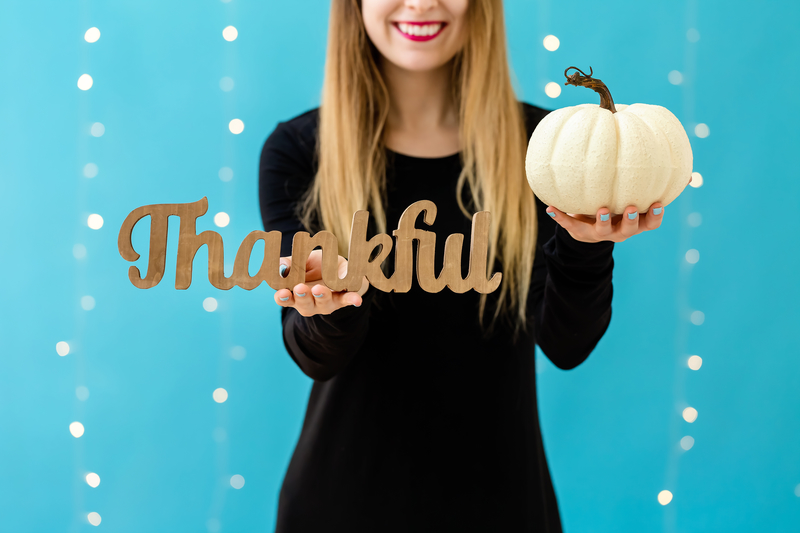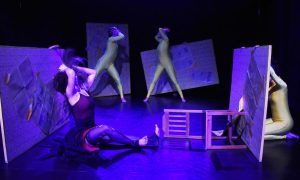Not only is November the month that jump starts the holiday season, but it is also the month when we prioritize thankfulness and gratitude. In a field where it is easy to be consumed by shortcomings, limitations or even comparisons to others, it is important to stop and appreciate what dance gives us. Here are five ways dance supports a practice of gratitude.
#1. Differing abilities
Whether it is in the studio, in an after-school program or in the club on a Saturday night, dance brings people of different abilities and backgrounds together. Dance can help us appreciate our own abilities while celebrating the accomplishments of others. We can learn to appreciate and honor other cultures and traditions around the world. Furthermore, it affords us opportunities to experience these cultures or even travel around the world through performance or education.
#2. Deeper connection
Dance is a form of expression and a therapy for some. It allows us to connect to parts of ourselves that we might not even realize exist. Through dance, many people experience spiritual awakenings or the feeling that they are connecting to their very soul. Martha Graham said, “Dance is the hidden language of the soul of the body.” Dance transcends verbal language and can provide a deeper understanding of ourselves as well as the world around us.
#3. Always growing
Dance teaches us that there is always room for improvement and that we never truly stop learning. Dance allows us to continually grow and challenge ourselves. We can be grateful for the lessons that dance teaches us. Although our execution may change as we age, we can continue to embrace the physical and cognitive benefits that dance provides.
#4. Family affair
We can appreciate the family that is created through our dancing. The friendships, the camaraderie; a unique brother or sisterhood established often transcends decades and lasts a lifetime. Even the mentors or teachers we have the pleasure to learn from become a part of our dance family tree.
#5. Freedom to explore
Dance gives us permission to explore our boundless creativity, to truly appreciate the freedom of our movements and the body’s ability to adapt and change when given a safe container. Freedom to be exactly who we are without fear of judgment and to be witnessed in our authenticity is something to truly be grateful for.
So what if you are feeling disconnected from your gratitude? There are ways to explore gratitude through movement. Here are three ways to prepare your mind for gratitude using your body.
#1. Identify areas of your body that give you life.
Recognizing that your heart pumps the blood necessary to keep you moving, your lungs provide oxygen that sustain your organs, and your brain houses the motherboard that makes your body operate is one way to reframe and validate the parts of you for which you are thankful. Identifying the parts of you that contribute to your strengths on the dance floor can also create a newfound appreciation for your body, especially if you continually focus on flaws.
#2. Identify parts of you that are ignored, neglected or in need of TLC.
Illuminating parts of you that feel less than, not enough, or unworthy provides opportunity to identify and meet your own needs and foster your ability for self-care and compassion. Pay attention to the parts of you that go into auto-pilot. Often times, they have the most to say; we just don’t stop to listen.
#3. Focus on breath.
Breath has the power to calm down the mind and body and can increase our capacity physically and emotionally. As you breathe in, focus on sending the breath to every inch of your being. This not only creates mental space to think and process information but also increases physical space in the body to breathe more fully and to accept and express gratitude.
Gratitude is truly a practice and doesn’t come easy to everyone. Finding ways to recognize what you are thankful for can be a challenge in itself. Hopefully you have some ideas on where to begin. I encourage you to start a dance gratitude journal. Write down three to five things that you are grateful for after you engage in dance. The more you practice, the more it will be habit and potentially part of your daily life.
What are you thankful for? How has danced supported your gr-attitude?
 By Erica Hornthal, LCPC, BC-DMT, Dance/Movement Therapist, Chicago Dance Therapy.
By Erica Hornthal, LCPC, BC-DMT, Dance/Movement Therapist, Chicago Dance Therapy.
Erica Hornthal is a licensed professional clinical counselor and board certified dance/movement therapist based in Chicago, IL. She received her MA in Dance/Movement Therapy and Counseling from Columbia College Chicago and her BS in Psychology from the University of Illinois Champaign-Urbana. Erica is the founder and CEO of Chicago Dance Therapy, the premier dance therapy and counseling practice in Chicago, IL. As a body-centered psychotherapist, Erica assists clients of all ages and abilities in harnessing the power of the mind-body connection to create greater awareness and understanding of emotional and mental health. For more, visit www.chicagodancetherapy.com.















